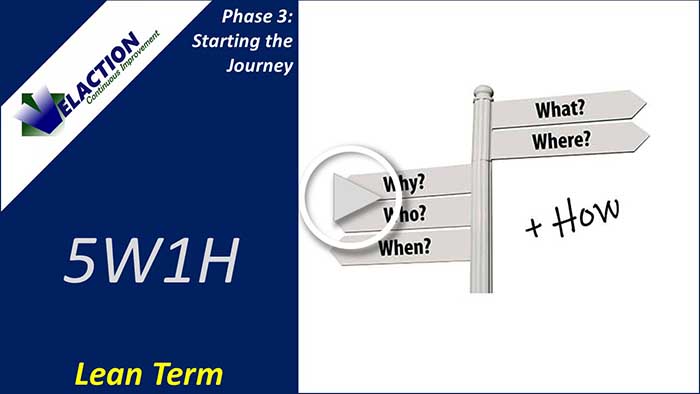| 🔍 > Lean Terms Directory |
5W1H
5W1H is shorthand for “Who, What, When, Where, Why, and How.” It is used both in problem solving and in project planning.

This set of questions is sometimes referred to as the Kipling Method or the “6 Serving Men of Creativity”, due to a poem that appeared in Rudyard Kipling’s 1902 “Just So Stories.”
I keep six honest serving-men
(They taught me all I knew);
Their names are What and Why and When
And How and Where and Who.

Like many tools in continuous improvement, this one provides structure to your thinking process.
Problem Solving and 5W1H
When using 5W1H for problem solving, if you address each of the W’s and the H, you will have a better understanding of the issue.
Consider how you might ask these questions if you noticed that your car started getting poor gas mileage.
- Who noticed the problem? Who drives the car?
- What changed? (new gas station, maintenance issues on the car, etc.) What was the magnitude of the change?
- When did the gas mileage get worse? When was it noticed?
- Where has the car been driving? (new route, different environment, etc.)
- Why did any changes occur? (Explain why different gas was being used, or why the route changed, or why there was a new driver)
- How was the problem noticed? How did the conditions that led to the change happen?
Project Management with 5W1H
These questions, who, what, when, where, why, and how, can also be used to check that a project has covered the necessary bases.
- Who is assigned to do required tasks?
- What, specifically, are they required to do?
- When are they required to have the tasks completed?
- Where should the tasks be completed? Where are the boundaries?
- Why is this task required? While this knowledge is not essential to completing a task, it helps individuals make decisions when the project does not proceed according to plan.
- How should the task be completed? This clarifies the standard that is required.

2 Comments
Themba · July 3, 2021 at 9:45 pm
good thinking structure
Jeff Hajek · July 7, 2021 at 10:35 am
Yeah–I think whenever we think about how we think, it reduces the chances of bad decisions.